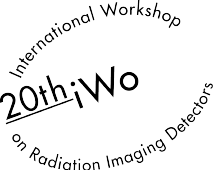Speaker
Description
Detailed study of energy resolution and charge division effects in silicon pad detectors performed recently show that these are suitable devices as high energy resolution detectors offering high count rate capability and moderate spatial resolution [1]. An energy resolution better than 220 eV FWHM at 5.9 keV at room temperature has been demonstrated using a low noise front-end electronics optimised for this application. Such detectors can be used in laboratory instruments using X-ray tubes. Given that the noise performance of the sensor and front-end electronics has been pushed to the limits such devices are potentially susceptible to radiation damage effects caused by soft X-ray even if the total doses are relatively low compared to synchrotron applications, for example.
In the paper we present the results of a systematic investigation of X-ray induced radiation damage in silicon pad sensors for total ionising doses up to 300 Gy. The radiation induced degradation of energy spectra as well as of critical sensor parameters, capacitance and leakage current, have been measured vs total dose. Detailed analysis of the measured energy resolution shows that degradation of energy resolution can be explained by degradation of the sensor parameters. Additional radiation effects related to charge division has been observed and will be discussed in the paper.
References
[1] P. Wiącek et al., Limitations on energy resolution of segmented silicon detectors, 2018 JINST 13 P04003
Acknowledgement
This work was partially supported by the AGH UST, statutory tasks No. 11.11.220.01/4 within subsidy of the Ministry of Science and Higher Education.
